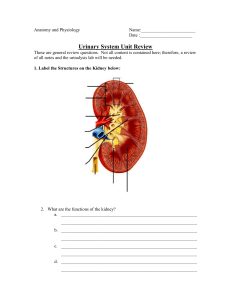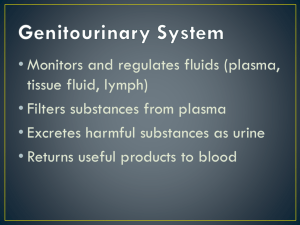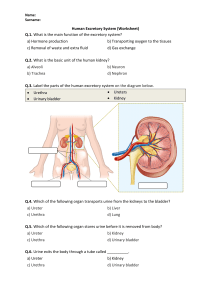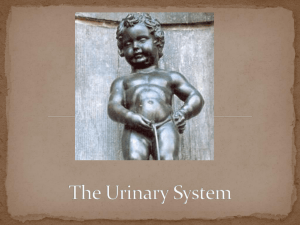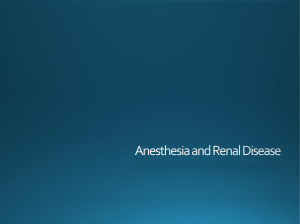excretory system test - Brookwood High School
advertisement
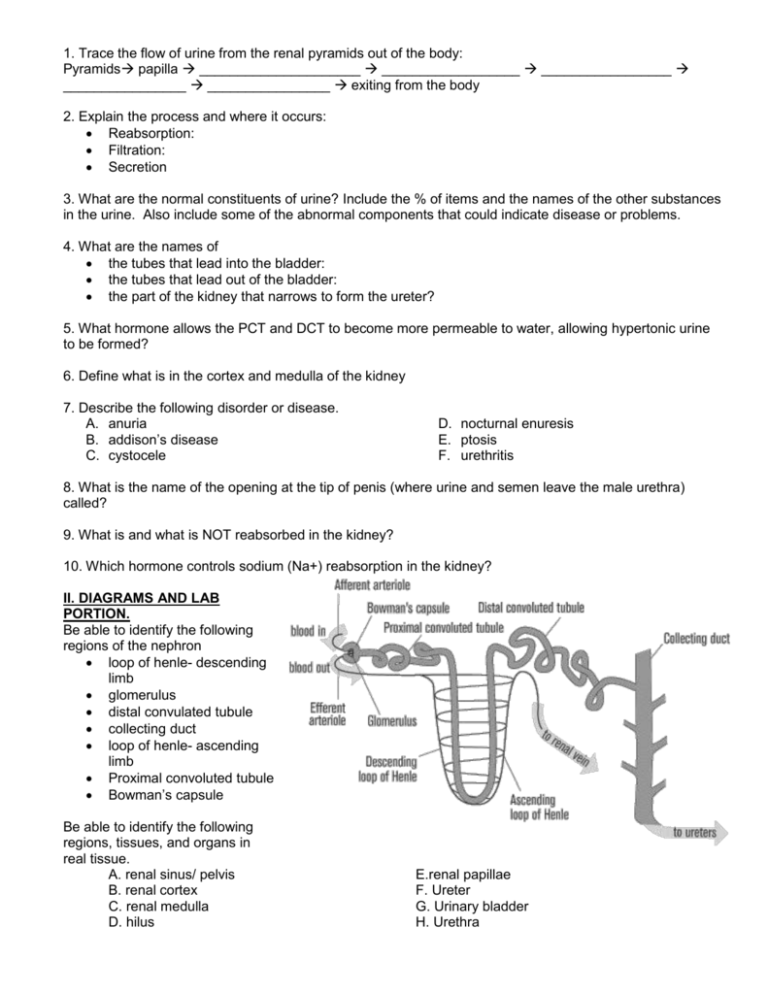
1. Trace the flow of urine from the renal pyramids out of the body: Pyramids papilla _____________________ __________________ _________________ ________________ ________________ exiting from the body 2. Explain the process and where it occurs: Reabsorption: Filtration: Secretion 3. What are the normal constituents of urine? Include the % of items and the names of the other substances in the urine. Also include some of the abnormal components that could indicate disease or problems. 4. What are the names of the tubes that lead into the bladder: the tubes that lead out of the bladder: the part of the kidney that narrows to form the ureter? 5. What hormone allows the PCT and DCT to become more permeable to water, allowing hypertonic urine to be formed? 6. Define what is in the cortex and medulla of the kidney 7. Describe the following disorder or disease. A. anuria B. addison’s disease C. cystocele D. nocturnal enuresis E. ptosis F. urethritis 8. What is the name of the opening at the tip of penis (where urine and semen leave the male urethra) called? 9. What is and what is NOT reabsorbed in the kidney? 10. Which hormone controls sodium (Na+) reabsorption in the kidney? II. DIAGRAMS AND LAB PORTION. Be able to identify the following regions of the nephron loop of henle- descending limb glomerulus distal convulated tubule collecting duct loop of henle- ascending limb Proximal convoluted tubule Bowman’s capsule Be able to identify the following regions, tissues, and organs in real tissue. A. renal sinus/ pelvis B. renal cortex C. renal medulla D. hilus E.renal papillae F. Ureter G. Urinary bladder H. Urethra



